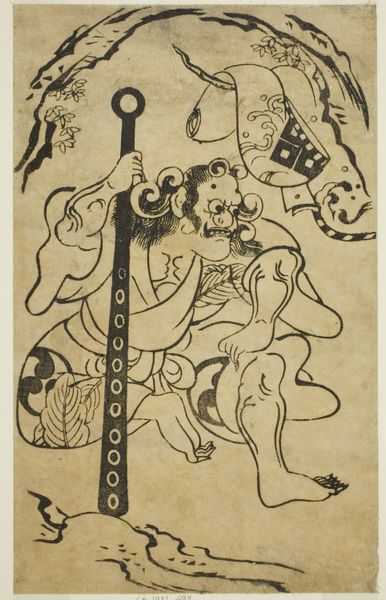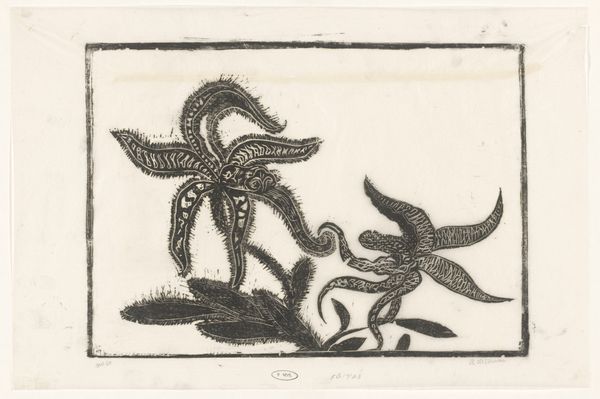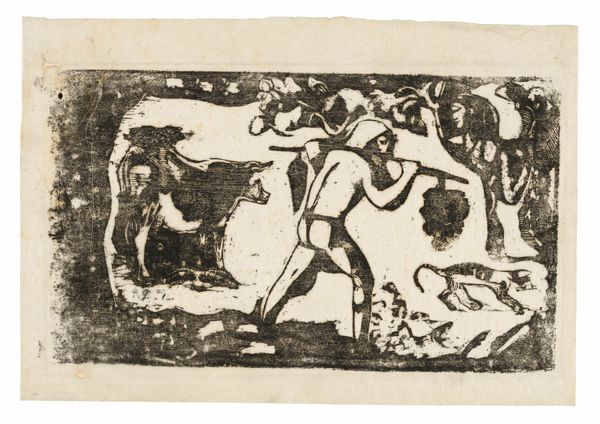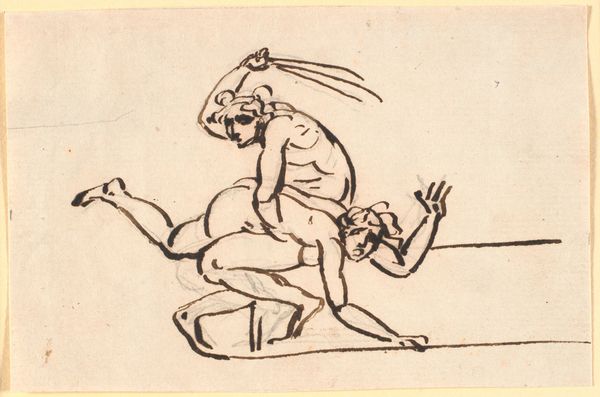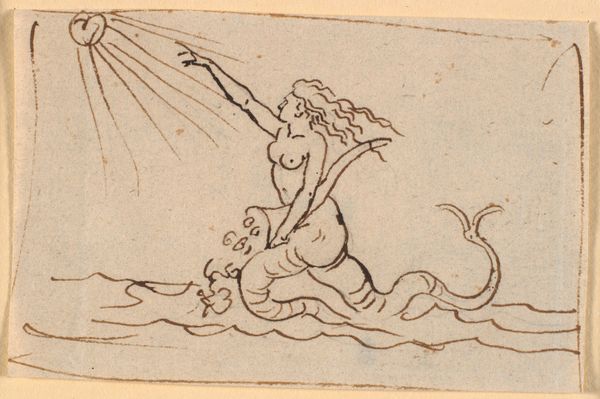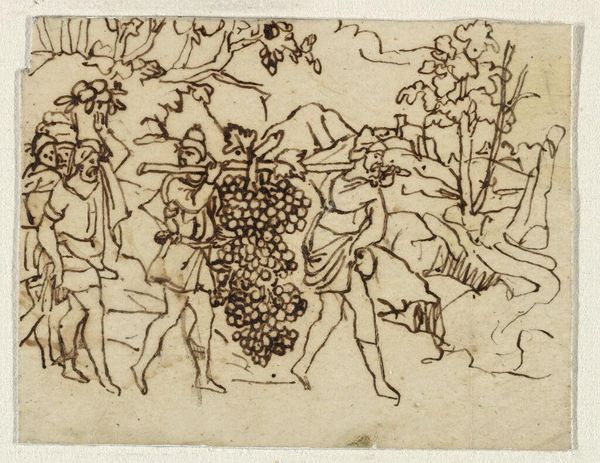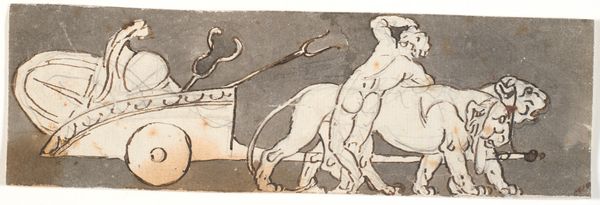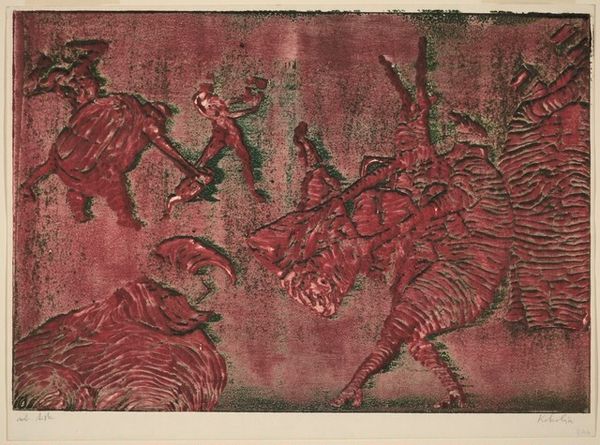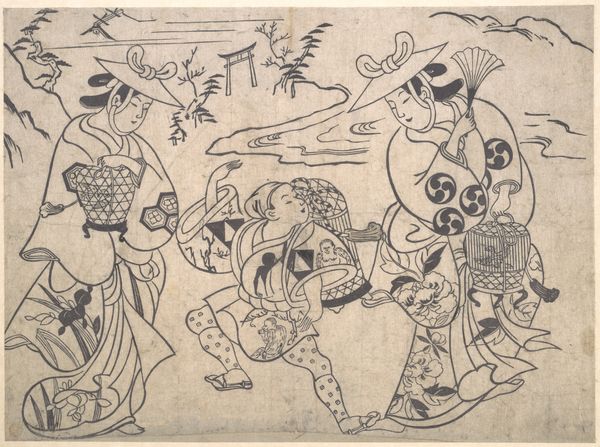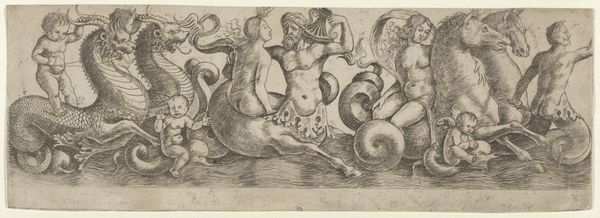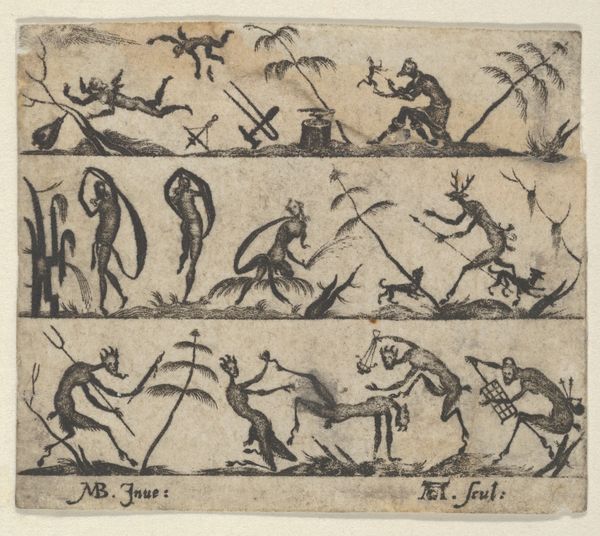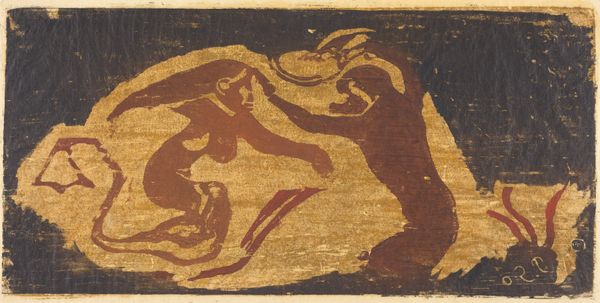
Blackwork Design for Goldsmithwork with Satyr and Monkey 1577 - 1621
0:00
0:00
drawing, print
#
drawing
# print
#
pen sketch
Dimensions: Sheet: 1 1/16 × 1 1/2 in. (2.7 × 3.8 cm)
Copyright: Public Domain
This tiny engraving of a goldsmith's design was made by Mathais Beitler around 1600. It is a print, so the image was incised into a metal plate, likely copper, with a tool called a burin. The plate would then have been inked, and pressed onto paper to create this impression. Notice how the black lines define the forms of a satyr, monkey, and lamp. The density of these lines creates areas of shadow and depth. This was no doubt intended as a guide for a goldsmith to create a luxury object, perhaps a pendant or a small sculpture. The printmaking process allowed Beitler to circulate his designs widely to goldsmiths and their patrons. This highlights the collaborative nature of artistic production at the time. The labor is distributed: Beitler creates the design, the goldsmith translates it into precious metal, and, of course, the patron who commissions the work makes it all possible. By focusing on the material processes, we recognize the interconnectedness of art, craft, and commerce in the 17th century.
Comments
No comments
Be the first to comment and join the conversation on the ultimate creative platform.
